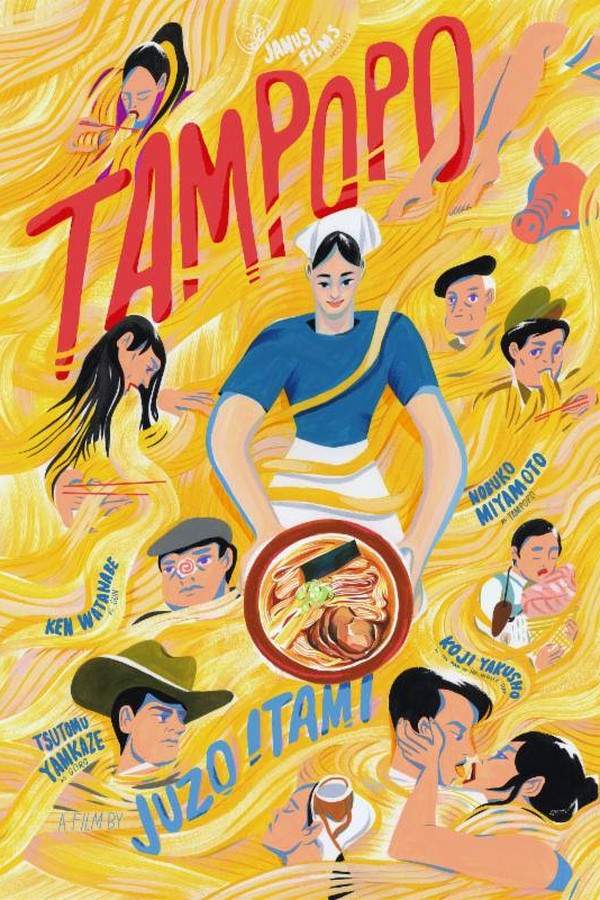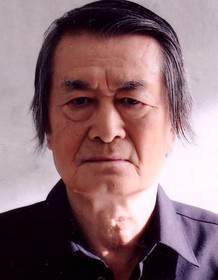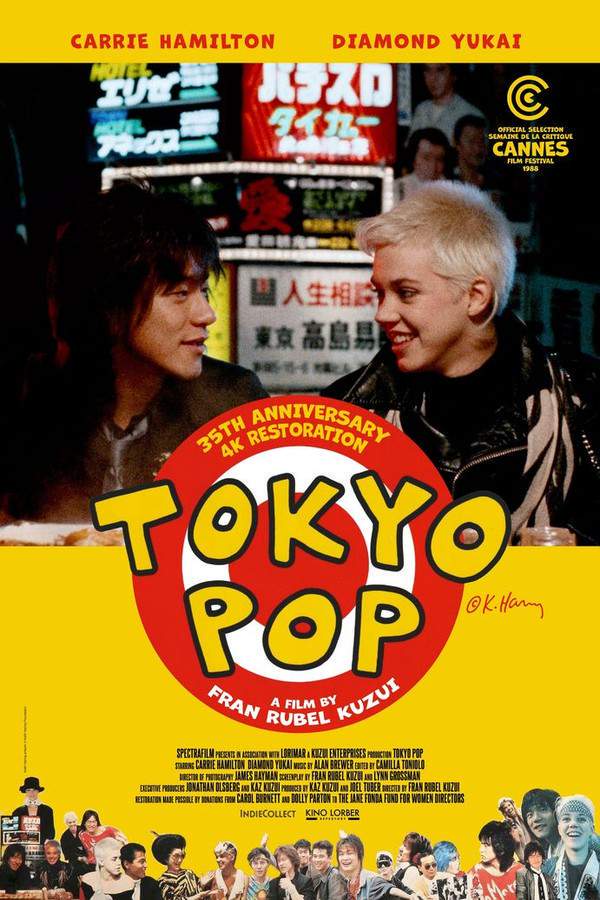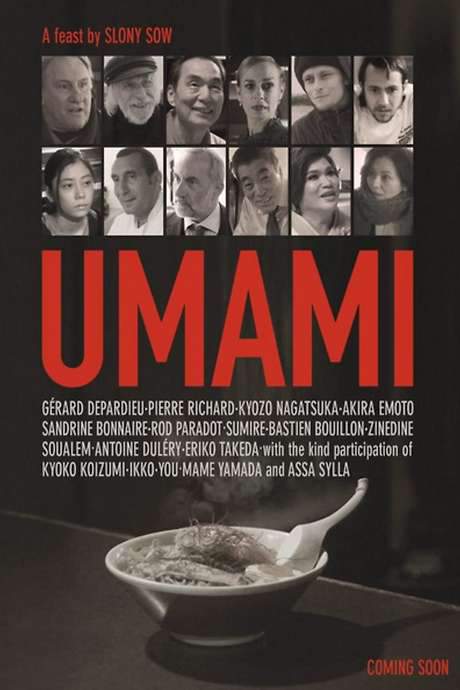Tampopo 1987

A compassionate truck driver and his harmonica-playing companion help a young widow revive her deceased husband's beloved ramen shop. Along their journey, they encounter a quirky group of noodle enthusiasts, each offering unique and unconventional advice. The film blends humor, romance, and a deep appreciation for Japanese cuisine, exploring themes of grief, passion, and the art of creating the perfect bowl of ramen.
Does Tampopo have end credit scenes?
Yes!
Tampopo does have end credit scenes. Stay until the very end!
Meet the Full Cast and Actors of Tampopo
Explore the complete cast of Tampopo, including both lead and supporting actors. Learn who plays each character, discover their past roles and achievements, and find out what makes this ensemble cast stand out in the world of film and television.
External Links and Streaming Options
Discover where to watch Tampopo online, including streaming platforms, rental options, and official sources. Compare reviews, ratings, and in-depth movie information across sites like IMDb, TMDb, Wikipedia or Rotten Tomatoes.
Ratings and Reviews for Tampopo
See how Tampopo is rated across major platforms like IMDb, Metacritic, and TMDb. Compare audience scores and critic reviews to understand where Tampopo stands among top-rated movies in its genre.

87
Metascore
8.5
User Score


%
TOMATOMETER

0%
User Score

7.9 /10
IMDb Rating
Take the Ultimate Tampopo Movie Quiz
Challenge your knowledge of Tampopo with this fun and interactive movie quiz. Test yourself on key plot points, iconic characters, hidden details, and memorable moments to see how well you really know the film.
Tampopo Movie Quiz: Test your knowledge on the culinary journey and character dynamics in the classic film Tampopo.
What is the name of the struggling ramem shop in the movie?
Lai Lai
Noodle House
Ramen Time
Tampopo's Kitchen
Show hint
Awards & Nominations for Tampopo
Discover all the awards and nominations received by Tampopo, from Oscars to film festival honors. Learn how Tampopo and its cast and crew have been recognized by critics and the industry alike.
3rd Independent Spirit Awards 1988
Best International Film
Full Plot Summary and Ending Explained for Tampopo
Read the complete plot summary of Tampopo, including all major events, twists, and the full ending explained in detail. Explore key characters, themes, hidden meanings, and everything you need to understand the story from beginning to end.
A duo of truck drivers, the seasoned Gorō and his junior colleague Gun, make a stop at a run-down roadside ramen noodle shop. While outside, Gorō heroically intervenes to save a boy named Tabo, who is being bullied by three classmates. Tabo is the son of Tampopo, the widowed owner of the struggling eatery known as Lai Lai. When a troublesome customer named Pisken pressures Tampopo to sell the shop, Gorō stands up for her, igniting a physical altercation. Although Gorō fights valiantly, he ultimately loses to Pisken and his goons, waking up the next morning in Tampopo’s home.
During breakfast, Tampopo graciously prepares a meal for Gorō and Gun. She inquires about their thoughts on her ramen, to which Gorō and Gun respond it is “sincere, but lacks character.” After receiving some valuable advice from Gorō, she proposes that he become her teacher, leading them to embark on a quest to transform her shop into a true temple of noodle soup mastery. They journey to rival establishments where Gorō evaluates their strengths and weaknesses. Struggling to perfect her broth, Gorō seeks out a “master” living in a homeless camp, who wields impressive culinary wisdom.
In an incident of gallantry, they save a wealthy elderly man from choking, who, grateful for their assistance, introduces them to his adept chauffeur Shohei, who possesses extraordinary noodle-making skills. With cunning tactics, the trio extracts ramen-making secrets from competitors, while Gun and his friends give Tampopo a stylish makeover as a modern restaurant owner. As they progress, they decide to rebrand the shop from Lai Lai to Tampopo.
Feeling remorse for accidentally complicating their prior confrontation, Pisken suggests a rematch with Gorō, concluding this time in a stalemate. To everyone’s surprise, Pisken reveals he is a contractor and childhood friend of Tampopo’s, offering to update the restaurant’s interior. Despite the renovation, Tampopo’s culinary efforts still leave something to be desired, prompting Pisken to share his private recipe with her. When five customers savor her latest dish down to the last drop, Tampopo realizes she has finally succeeded.
Meanwhile, Tabo also finds victory by outsmarting his bullies, ultimately befriending them. As her freshly revamped shop welcomes a line of eager customers, the story intertwines other minor narratives, showcasing a variety of quirky characters engaged in unique culinary encounters. For example, a group of corporate executives awkwardly navigate a French restaurant, while a woman’s etiquette class hilariously shifts focus upon witnessing cultural dining practices.
Throughout the film, viewers witness heartwarming acts of love and culinary artistry, like a housewife rising from her deathbed to prepare a family meal, and a man exploring sensual food experiences, culminating in a poignant and reflective moment. Such diverse vignettes enrich the tapestry of this compelling journey centered around ramen, community, and personal growth.
Uncover the Details: Timeline, Characters, Themes, and Beyond!

Coming soon on iOS and Android
The Plot Explained Mobile App
From blockbusters to hidden gems — dive into movie stories anytime, anywhere. Save your favorites, discover plots faster, and never miss a twist again.
Sign up to be the first to know when we launch. Your email stays private — always.
Watch Trailers, Clips & Behind-the-Scenes for Tampopo
Watch official trailers, exclusive clips, cast interviews, and behind-the-scenes footage from Tampopo. Dive deeper into the making of the film, its standout moments, and key production insights.
Tampopo Themes and Keywords
Discover the central themes, ideas, and keywords that define the movie’s story, tone, and message. Analyze the film’s deeper meanings, genre influences, and recurring concepts.
Tampopo Other Names and Titles
Explore the various alternative titles, translations, and other names used for Tampopo across different regions and languages. Understand how the film is marketed and recognized worldwide.
Articles, Reviews & Explainers About Tampopo
Stay updated on Tampopo with in-depth articles, critical reviews, and ending explainers. Explore hidden meanings, major themes, and expert insights into the film’s story and impact.
Similar Movies To Tampopo You Should Know About
Browse a curated list of movies similar in genre, tone, characters, or story structure. Discover new titles like the one you're watching, perfect for fans of related plots, vibes, or cinematic styles.
Quick Links: Summary, Cast, Ratings, More

What's After the Movie?
Not sure whether to stay after the credits? Find out!
Explore Our Movie Platform
New Movie Releases (2026)
Famous Movie Actors
Top Film Production Studios
Movie Plot Summaries & Endings
Major Movie Awards & Winners
Best Concert Films & Music Documentaries
Movie Collections and Curated Lists
© 2026 What's After the Movie. All rights reserved.
































